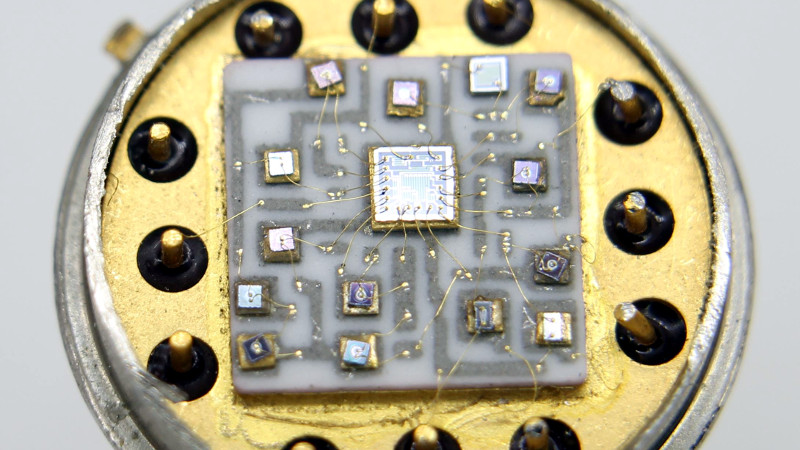We have covered enough of the work of [Ken Shirriff] on these pages to know that when he publishes something, it will be a fascinating read and work of the highest quality. And so it is with his latest, a very unusual op-amp on which he performs his usual reverse engineering. Not only does it lead us directly to some of the seminal figures in the early years of the semiconductor industry, it turns out to have been a component manufactured to a NASA specification and of which there is an example on the Moon.
The metal can revealed a hybrid circuit when the lid was removed, one in which individual transistors were wired together with a single block containing a group of thin-film resistors. At the start of the 1960s the height of consumer electronics would have been your domestic TV which would have been an all-tube affair, so while it sounds archaic this would truly have been a space-age piece of technology. The designer is revealed as the legendary [Bob Pease], and the transistors take us back to the semiconductor physicist [Jean Hoerni], inventor of the planar transistor and one of the famous eight defectors from Shockley Semiconductor in the 1950s who kick-started the semiconductor boom.
The op-amp itself is a relatively simple design without the compensation capacitor you might expect in a modern device, but what makes it unusual for its time is the use of [Hoerni]’s planar JFETs at its input. [Ken]’s analysis is as usual extremely thorough, and the bit of Silicon Valley history it gives us is the icing on the cake.
If you have a thirst for ancient op-amps, you might like our look at the first commercially available fully-integrated design, the Fairchild μA702.















curious people want to know specifically what is this? shooting from the hip, without detailed reverse engineering, how about an lh002 or related nat semi hybrid? Jeff Furman
I went to TFA (highly recommended, BTW). I know that is pretty daring of me, but this isn’t Slashdot, so I took the risk.
It says that this is an Amelco 2404 BG, which was sold in 1969 for $58.50 a pop. Quite a bargain, if you ask me.
Just over $410 at today’s prices.
Wonder what the modern equivalent is – probably a SOT23 that costs $0.005 in quantity
The Birth of Silicon Valley documentary on YT covers this period of time quite well:
https://www.youtube.com/watch?v=DCbRZGDV-ws
I consider myself incredibly lucky to have grown up and been learning electronics when people like Bob Pease, Bob Dobkin, George Philbrick, Jim Williams, and many other greats were writing the app notes for whatever company they were then working for – the ones that taught us all better than any classroom could (and at the time, much more up to date). We had lots of fun with the National Linear Apps book – finding the mistakes in the schematics was a nice parlor game.
And educational as heck.
(I’m the Doug mentioned in the Philbrick archive, by my friend Joe Sousa – who even introduced me to Barrie Gilbert of analog multiplier fame). The first patent I was associated with used K2W opamps as part of a scheme to read graphs drawn in conductive ink on vellum by rolling an uninsulated power resistor across the material and reading the resulting voltage from the ends of the traces. The world’s first editable (xacto knife and silver paint..) analog multi channel memory IIRC. It was used in my Dad’s work with formant speech synthesizers demo’d at the World’s fair in 1964. I was one lucky kid, who got started very early in life!
Thanks Jenny for dropping in some content to keep us old farts happy now and then. You have a good nose for it.